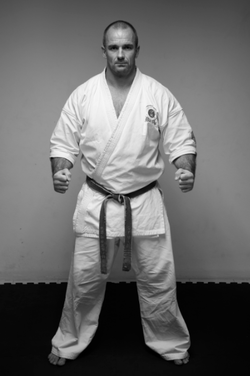
To truly witness the beating heart of the Judd Reid story we must zoom back 25 years to a chicken-legged Australian teenager with a preppy haircut back in Melbourne, Australia, obsessed with Bruce Lee movies and newly introduced to karate by instructor Shihan Eddie Emin. Spanning back through those decades, we first catch a glimpse of what led Judd to accomplish one of the most difficult tests of strength, skill, and mental determination in the history of athletic achievement. It's something in his eyes -- a glint of pugnacious resolve alarming in its intensity, oceans of belief that led him to the most rarified air of martial arts.
For a long time Judd's story has only been familiar to a small number of people; fellow karate traditionalists, fight enthusiasts, Australians cheering their home-town boy, and peers at the gym in Pattaya, Thailand where he trained the last 7 years. But now, thanks to his best friend and corner man, Anton Cavka, who shot an intimate documentary of Judd's journey called 100 Man Fight, the world will know.
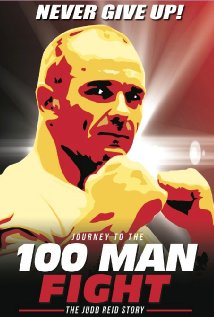
100-Man Fight is taking Australia, Europe, and Asia by storm but still only available via website rental in the United States, where familiarity with the kumite is limited to the 1988 Jean-Claude Van Damme movie, Bloodsport, based on the real life competition. Cavka's documentary gives us never before seen footage of Judd's early years, his mind-blowing training regime, competitions, and actual comprehensive footage of the kumite where he punched and kicked his way through 3 ½ hours of the most grueling physical abuse imaginable.
So many questions filled my head as I sat down with Cavka early one morning in a smoke-filled, end-of-the-world bar in Phnom Penh, Cambodia, grizzled patrons still drooping over their beers from the night before, unwilling to face the light outside. He patiently recounted Judd's story and told me all about the film.
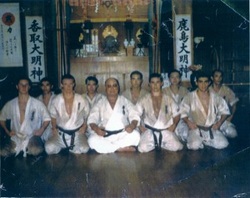
Going in as a 160 lbs. kid, Reid emerged as the 205 lbs. personification of violence that we see now. Cavka recalled the first time he met up with his friend at a Tokyo golf course after those three years. Amazed at Judd's new physique, he asked to see some of the karate he'd learned. Reid walked up to a 2-foot thick tree and kicked it, bare-shinned, with all his might. The tree cracked and swayed. Reid continued to leg strike it again and again until the whole trunk split across and fell to the ground, leaving Cavka with mouth agape but Reid unaffected.
Although finished with uchi deshi training, there was more work to be done. Sosai Oyama instilled in his students that there were two accomplishments every great karate fighter should pursue in his lifetime:
1) To be a world champion, and
2) To complete the 100-man kumite.
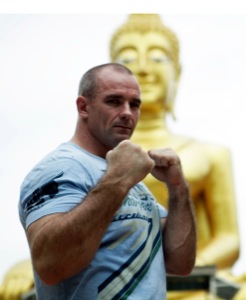
Content with the championship as the highlight of his karate career, Reid went back to teaching until he was invited to compete in the 100 Man Kumite in 2011 by the World Kumite Organization. The ultimate test of physical and mental capabilities, the kumite is so intense it's been compared to completing an Iron Man triathlon... with someone punching and kicking you the entire time. Few are even honored with an invite yet alone complete it, as they're required to fight -- not spar, but fight -- 100 consecutive black belts and top fighters from Japan with no headgear, no gloves, no pads, and no quarter given. Punching to the face is not allowed but it's perfectly okay to kick to the head at full force. Each fight goes on for 1½ minutes and cannot be stopped for any reason without being disqualified. A doctor is on site but not allowed to intercede for any reason until the fight is over, even in the short 30-second rest between rounds. Reid was hesitant to accept the invite as he'd seen the kumite fell greater men.
"When I first was asked to do the 100-man, I said "No way. I can't do it," said Reid, "It's too hard. I had seen some people go through it, and actually one of them was one of my opponents, Masada Akira."
Reid fought the karate world champion twice before as an opponent when Akira attempted the 100-man kumite years earlier. He faced him in round 10, when Akira was fresh, and again round 70 when Akira was delirious, a walking punching bag whose mind and body were in shock, leading him to start biting opponents.
"I guess he was just going into survival mode. I had never seen anything like it, so that's why I said no and continued to say 'no' for a while," said Reid.
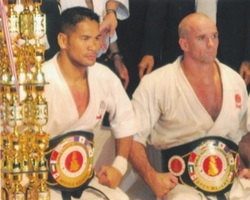
Then, he was ready. The milestone date of the kumite, October 22, 2011 was upon him. It was held in a heavily guarded underground dojo beneath Osaka's Perfectionary Gymnasium with Cavka's camera the only one rolling. Reid was supported by his mother and sister in attendance, his Thai girlfriend, Mo, Cavka, and Nicholas Pettas, his co-student and only other foreigner to complete the 1,000-day training.
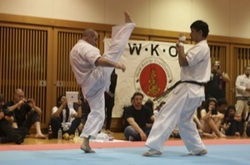
"It was the hardest thing I've ever been through," Reid said, "But having my family and friends there meant the world to me. I feel like one of the luckiest martial artists in the world, having had great teachers."
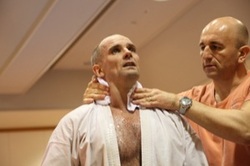
Reid has since moved back to Melbourne and opened up his own burgeoning karate studios, giving boxing training to an Australian Rules football team, and enjoying quiet time with his family now that he's finished competing in martial arts. He puts all of his focus and determination into teaching kids the valuable lessons he learned through karate.
"It's all about making absolute sacrifices to achieve what you want in life," Reid told me via a Skype call to Australia. "Whether that's in a classroom or the dojo or a karate tournament. Preparation is everything in life, isn't it? Now I can take my love and my passion and give it all back to the students."
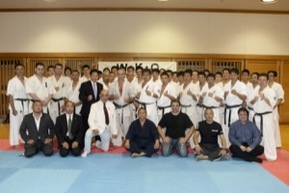
To see real video of the kumite or rent the documentary, go to www.100ManFight.com.
 RSS Feed
RSS Feed